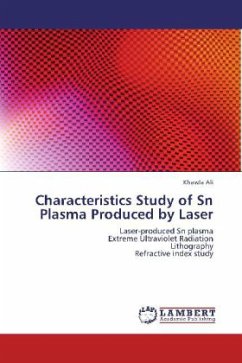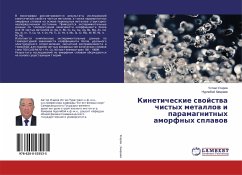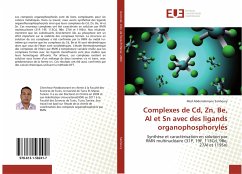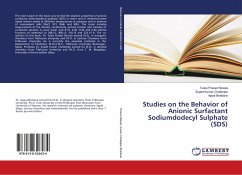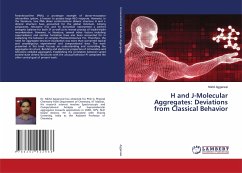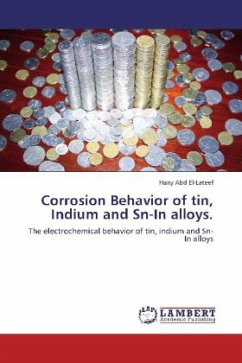
Corrosion Behavior of tin, Indium and Sn-In alloys.
The electrochemical behavior of tin, indium and Sn-In alloys
Versandkostenfrei!
Versandfertig in 6-10 Tagen
52,99 €
inkl. MwSt.

PAYBACK Punkte
26 °P sammeln!
The electrochemical behavior of tin, indium and Sn-In alloys in 0.5 M solutions of oxalic, Malic and citric acids at temperature 30-60 oC was studied by Potentiodynamic technique. The results showed that the peak height and corrosion rate increase with increasing the temperature. The corrosion of tin, indium and Sn-In alloys is affected by the formation of soluble complex species with organic acid anions and the order of decreasing aggressiveness is oxalic malic citric acid. The corrosion rate of Sn-In alloys also affected by percentage of In in the alloy. Where In form two phases alloys with ...
The electrochemical behavior of tin, indium and Sn-In alloys in 0.5 M solutions of oxalic, Malic and citric acids at temperature 30-60 oC was studied by Potentiodynamic technique. The results showed that the peak height and corrosion rate increase with increasing the temperature. The corrosion of tin, indium and Sn-In alloys is affected by the formation of soluble complex species with organic acid anions and the order of decreasing aggressiveness is oxalic malic citric acid. The corrosion rate of Sn-In alloys also affected by percentage of In in the alloy. Where In form two phases alloys with Sn ( and phase), these results were confirm with X-ray diffraction. The corrosion inhibition of tin, indium and their alloys in aqueous acidic solutions in presence of Adenine, Adenosine and 2, 4, 6 tris (2pyridyl)-1, 3, 5-triazine (PYT) as corrosion inhibitors was studied.



